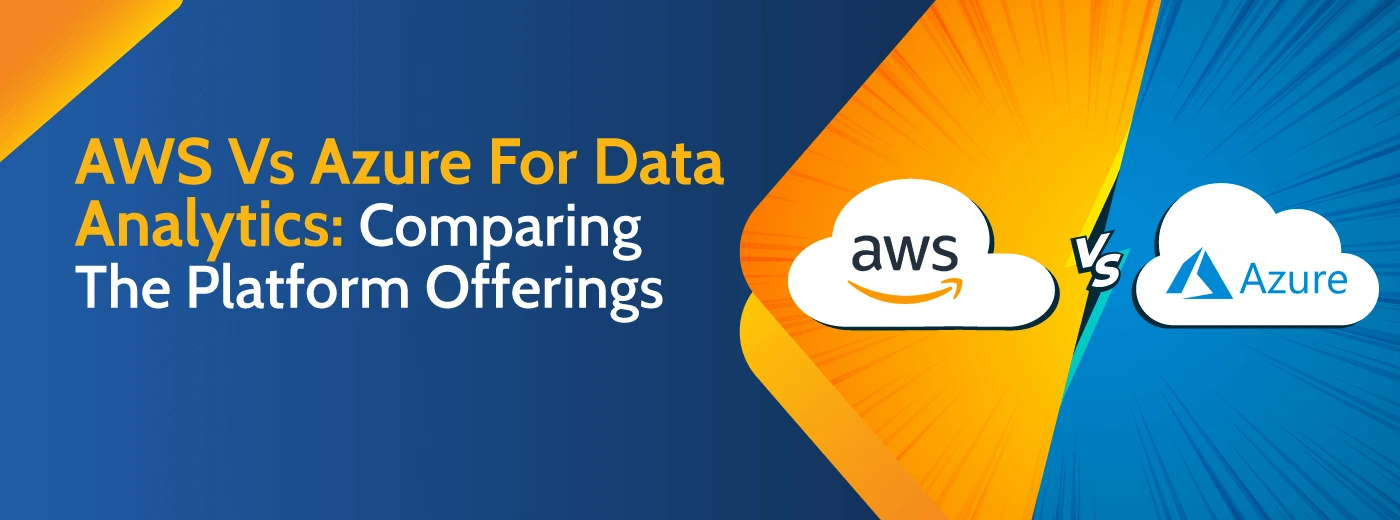
Sign up to receive latest insights & updates in technology, AI & data analytics, data science, & innovations from Polestar Analytics.
Editor’s Note: Welcome to our comprehensive comparison of AWS vs Azure in the realm of data analytics. In this insightful blog post, we delve deep into the features, capabilities, and nuances of these two prominent cloud platforms, providing you with valuable insights to aid in your decision-making process. Dive into this analysis to explore the strengths, weaknesses, and key considerations when navigating between AWS and Azure for your data analytics needs.
Amazon Web Services and Microsoft Azure are two popular cloud computing services, used by everyone - from small businesses to medium and large enterprises- to automate, streamline and simplify business processes. In this blog, we will take a deep dive into the Azure data analytics and AWS offerings, where they differ, and how they are used by enterprises to serve business-critical use cases and drive a wide range of values. But first of all, let us understand why cloud computing platforms are becoming so important for serving modern analytics use cases.
What is the cloud? Cloud started as an IT industry slang term, and it refers to servers and the associated software and databases that run on those servers, that are provided over the internet. Major cloud computing platforms, such as Amazon, and Azure, provide access to computing resources over the internet, using virtualization where servers are deployed and software are provisioned without having the need to configure, manage and maintain by themselves.
As a user, you can create an account and sign up with any of the cloud computing platforms of your choice. You would only need the internet to access computing resources for managing your complete workflow.
The major cloud computing providers, such as Microsoft Azure and Amazon Web Services have numerous data centers, spread over the globe, and they utilize incredible economies of scale to deliver superior computing or storage services that are critical to organizations. Users can access any computing resource that they require and they only pay for what they use.
Cloud computing can be utilized for managing a wide range of enterprise workloads such as:
Computing power- To run advanced enterprise workloads, such as processing big data, running machine learning algorithms, and supporting advanced analytics workloads, organizations need access to vast computing resources at their disposal, which both Azure Synapse and AWS provide through service offerings such as Azure VMs, AWS EC2, AWS Beanstalk, etc.
Cloud computing service providers allow organizations to scale rapidly as per their computing and storage requirements, and this provides immense flexibility to address critical big data services use cases according to their customized requirements.
Scalable Storage- To support the expanding enterprise use cases involving unstructured data and streaming data analytics, X-analytics, organizations need a scalable storage system that can support the needs for modern business intelligence.
Security- Data security is of utmost importance to organizations today and both AWS and Azure provide top-notch security with several industry-grade certifications and security solutions. With over 90% of Fortune 500 organizations using Microsoft Azure Services, Azure is a winner when it comes to handling enterprise-grade security requirements.
Visualization and Reporting- Organizations require access to near real-time reporting for their mission-critical KPIs today and both Azure and AWS support the visualization requirements with Power BI and Quick Sight respectively. Power BI is again a winner in this regard, with its support for a wide range of data sources, along with powerful visualization capabilities and its support for DAX queries for powerful data modelling.
Now let's go deep into both cloud platforms - Microsoft Azure and AWS, runaway market leaders currently, and study their different value offerings for analytics.
Microsoft has always positioned itself, as focused on enterprise customers. With already existing footprints through investments in Office, Windows, Dynamics, Outlook, and other popular applications, enterprises - small, medium, and large enterprises - find it easier and often more cost-effective in onboarding with the Azure ecosystem. This gives Azure a significant advantage over its rivals, including AWS.
Azure is a cloud computing service launched in Feb 2010 by Microsoft to access and manage resources. Today, Azure is a fast-growing and second-largest cloud computing platform in the market. More than 90% of Fortune 500 companies today use Azure for their various workflows.
In a January 2021 earnings conference call, Microsoft CEO Satya Nadella shared numbers into record cloud earnings for Microsoft” note that this includes revenue from Office 365 and other business applications on a cloud” of $16 billion for the quarter, up a staggering 34% year-over-year.
A properly architecture cloud data platform automates essential tasks, like data storage, processing, security, governance, transaction, and metadata management.
Azure services are divided into 18 categories and in all, they contain more than 200 services. With more than 50+ data centers in every major geographical region across the globe, Azure provides support for multiple languages such as Node JS, C#, and Java. Some of the popular services within Azure are the following.
With Azure Services, you can create a virtual machine for Windows or Linux with highly scalable configurations in a matter of seconds. The Azure Service Fabric simplifies micro-service development and application lifecycle management.
Azure CDN is used to deliver high bandwidth content to users around the world fast and cost-effectively. Azure Express Networks allow on-premise networks to connect to Microsoft Cloud through a secure private connection. Azure DNS allows you to host applications.
To begin using the Azure service offerings, you must log in to the Azure Portal and create an account first.
Microsoft Azure is a cloud computing platform that offers a wide range of services, including computing, storage, networking, and databases.
Below we will take a look at the major components within Azure Data Analytics Services for you to manage your end-to-end analytics workloads.
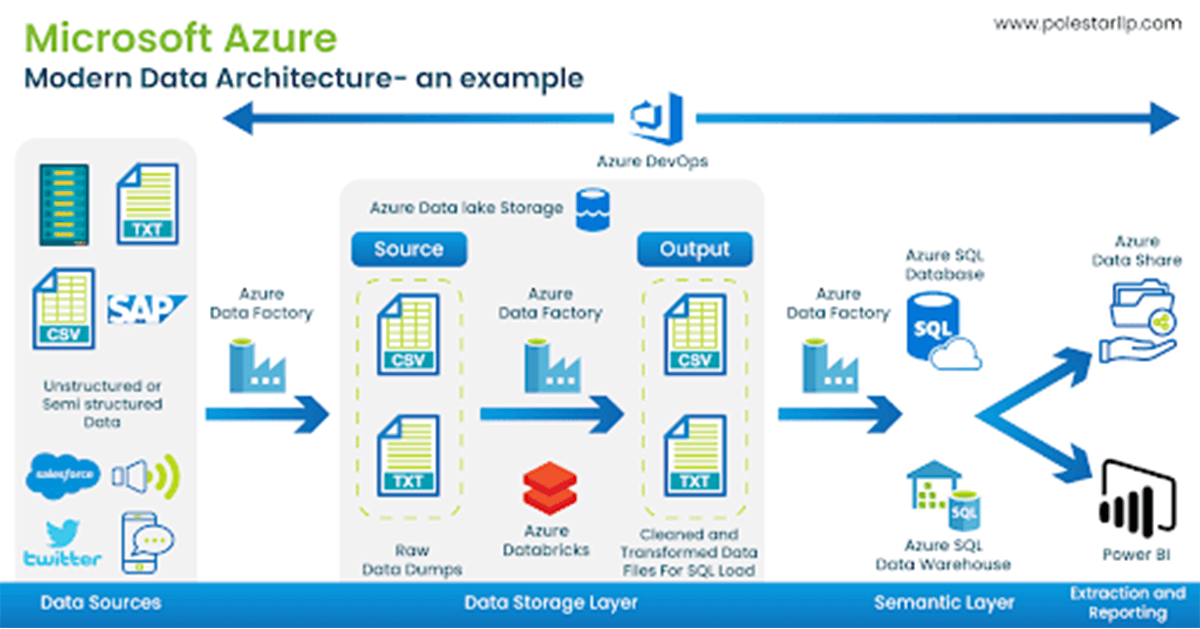
Azure Data Factory- A PaaS offering from Microsoft, Azure Data Factory (ADF) is a data orchestration tool in Azure. Azure Data Factory is used for fast and effective data movement within the data pipeline. ADF can connect to more than 80 data sources and can be used for transforming the data. ADF is also integrated with SSIS.
ADF is typically used within the Azure workflow for data preparation and for moving data from an on-prem environment to the cloud. ADF provides the pipeline to move the data through the ETL process.
If you have already invested in Microsoft data architecture, ADF also enables you to reuse SSIS investments with minimal effort.
Azure Data Bricks- It is built on the open-source cloud platform Apache Spark and Microsoft has extended it to make it easier to use for enterprises. With its auto-scaling features, Data Bricks simplifies data infrastructure maintenance and deployment. Dynamic scaling features within data bricks allow you to increase provisioning to match expanded workflows and it allows you to run simultaneous tasks to speed up data processing.
Azure Data bricks use a specialized SQL data warehouse connector to transform large volumes of data into a data warehouse. Data bricks have become an essential component of modern data analytics workflows because of their support for large number crunching and heavy data wrangling.
Data Bricks leverages a powerful Spark API to deliver low latency and Data Bricks also allows you to code in any language - R, Python, Scala, etc. Additionally, Data Bricks offers a hosted ML flow for optimizing and auto-scaling Apache Spark-based environments. With ADF and Data Bricks, you can unify both streaming and batch data processing.
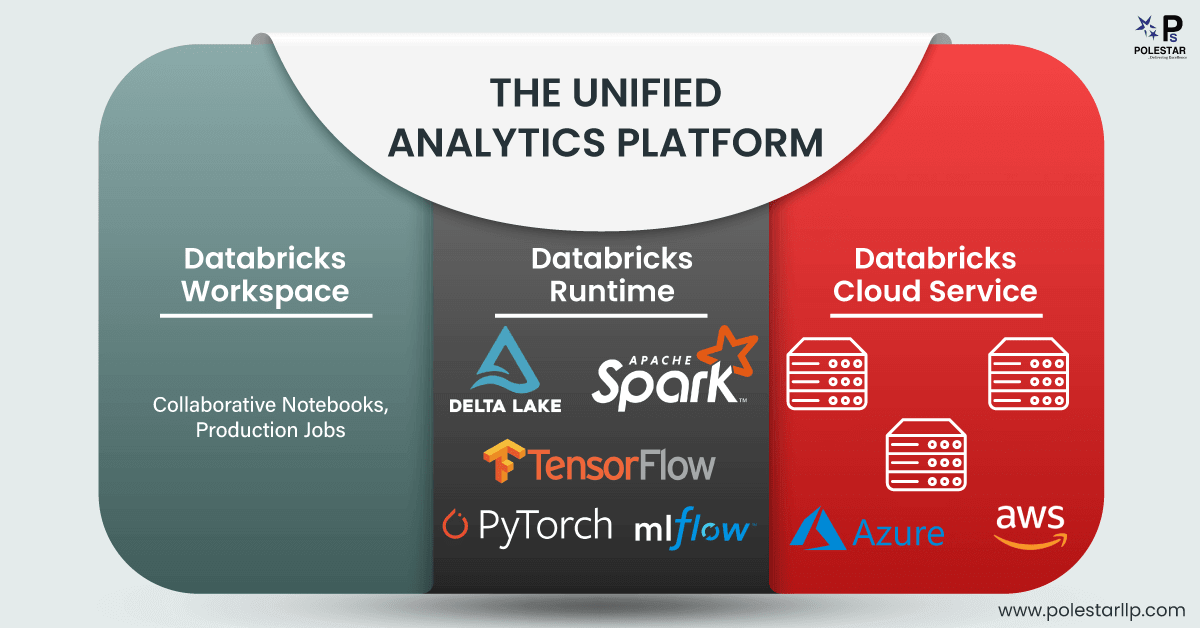
Azure SQL Data Warehouse- It is a fully managed data warehouse that provides lightning-fast query performance and immense flexibility via its poly-base engine.
Azure SQL Data Warehouse adheres to the leading industry security and supports multiple use cases.
Due to its close integration with data bricks, the Azure data warehouse provides optimal performance in the cloud. Azure SQL Data Warehouse has a Massive Parallel Processing (MPP) architecture and therefore can support massive data volumes and several big data analytics use cases.
We can plan your migration, deploy complex data workflows, optimize your cloud investments, and identify areas for continuous cost savings.
Azure SQL DW is designed for serving OLAP use cases, and it helps you find insights quickly by connecting to several data sources. SQL uses data virtualization to bridge data across many sources without replication. Therefore it keeps data in its original location and creates external tables. SQL DW also enables distributed parallel processing.
Azure Private Link provides a private endpoint with a private IP address for consuming Microsoft Azure resources securely. Dynamic masking allows hiding or masking of sensitive data.
Power BI- A modern and enterprise-grade business intelligence service from Microsoft that provides stunning visualizations, with the ability to integrate it into any application or portal and support a plethora of other reporting features. Power BI has been an industry super-hit since its launch in 2015 and has consistently featured among both critics and users as among the favorite business intelligence tools.
Power Apps make it easy to integrate Power BI applications into your custom workflow application. Power App is essentially a container service that enables development teams to create mobile apps that can run on iOS, Android, Windows (Modern Apps), and on any internet browser. While previously, application developers had to create apps for each different environment that they used, Power Apps makes it easy to simplify the efforts and hence reduces development costs, and support costs.
Azure Data Share enables data scientists to securely share data with people outside of their organization with just a few simple clicks. It provides the data provider the capability to stay in control and have better management and monitoring of their data by laying down the rules and specifications for how their data is going to be handled.
To manage the enterprise demand for X-analytics use cases, Azure provides the following types of storage services
Amazon Web Services is the largest cloud computing provider in the world and a pioneer in the space of cloud computing. Since launching Amazon Elastic Compute as an Infrastructure as a Service (IaaS) - a service that preceded the definition, way back in 2006, Amazon Web Services has grown into an IT juggernaut. As the below infographic shows, AWS is a clear market leader when it comes to cloud computing.
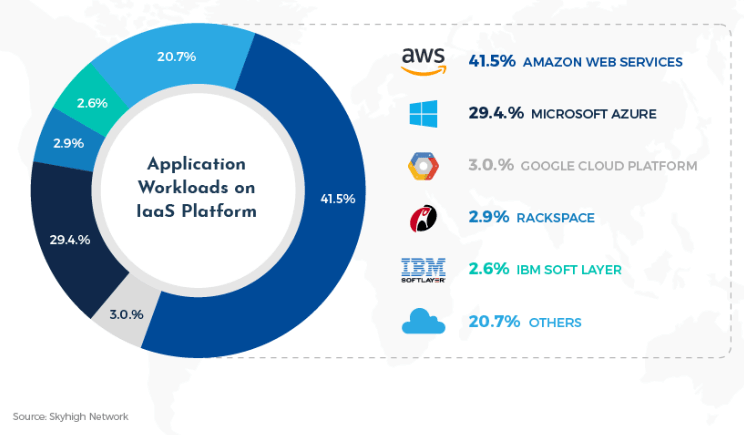
Through incredible economies of scale and by utilizing highly efficient and lean practices, AWS has managed to considerably reduce the price of its offerings, and yet keep increasing its revenues, generating 35 Billion USD in 2019, up from (mere!) 3 Billion USD in 2013.
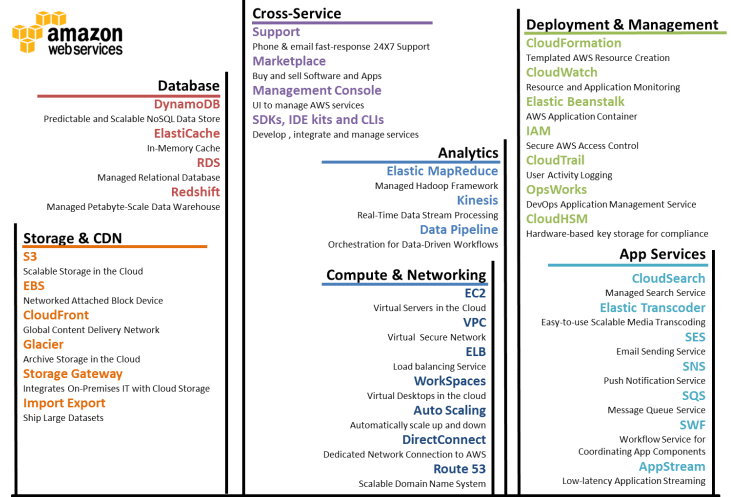
(source: Amazon.com)
Amazon also provides a range of data analytics services on AWS. Most popular among these are AWS EC2 and AWS S3, but AWS also provides a strong end-to-end analytics stack for managing enterprise workloads.
Below we will take a look into the main components of the AWS stack across compute, storage, database, and analytics.
1. Compute
Amazon EC2 is a virtual server in the cloud that provides secure and resizable compute capacity and provides web-scale computing for use by developers.
AWS Elastic Beanstalk- It is an orchestration service from Amazon, that enables enterprises to deploy applications that orchestrate multiple AWS services, such as S3, EC2, Cloud Watch, Simple Notification Services, and Load Ba-lancers. Therefore, this service is meant for enterprises to enable them to easily run and manage web apps.
AWS Lambda- AWS Lambda is serverless computing that can be used to run code in response to events or triggers. AWS Lambda automatically calculates and provisions the requisite amount of computing resources that will be required for the code to run desirably.
2. Storage
Amazon Simple Storage Service (S3) - S3 is object storage built to store and retrieve data. It offers security and scalability for developers as well as state-of-the-art data durability so that data is always protected and available. It can be used to build and deploy data lakes.
Amazon S3 Glacier- Amazon S3 Glacier is a durable, secure, and very low-cost cloud storage service from Amazon Web Services AWS that is typically used by enterprises for creating data backups and archives.
3. Databases and Analytics Offerings
Amazon RDS - A Pass offering from AWS that enables enterprises to set up, configure, and scale-up relational databases. Amazon RDS automates provisioning, patching, and creating data backups.
Amazon Redshift - Amazon Redshift is the data warehouse in the cloud offering that enables enterprises to deploy, manage and maintain low-cost operations and high-performance data warehouses.
AWS Database Migration Services - AWS Database migration services are used to migrate databases with minimal downtime to enterprise workloads.
Amazon Athena- A serverless query service from AWS that enables analysis of data in S3. it uses standard SQL for enabling intuitive analytics that can run from simple to complex queries. It also enables rapid experimentation and exploration.
Amazon Kinesis- Amazon Kine-sis is a highly scalable offering that allows the gathering, and processing of streaming and real-time data such as data from IoT sensors, video, social media data, etc.
AWS Glue- By connecting to a variety of data sources such as S3, RDS, Oracle, MySQL, or Redshift, AWS Glue is a server-less, fully managed ETL tool that allows data preparation, movement, transformation, and enrichment of data across data stores. It comes with capabilities for data cataloging as well.
Amazon Sage Maker- Amazon Sage-Maker is a multifaceted and fully managed platform that enables analysts and data scientists to deploy and run complete machine learning workflows from model selection, model training, deployment, and hosting of the models. It streamlines resource consumption by product-ionizing models through auto-scaling. Thus, Sage Maker reduces barriers to entry to run ad hoc machine learning workflows. Reduces time to value and provides a unified interface for moving models from selection, and training to product-ionizing.
Amazon Quick Sight- Amazon Quick Sight is a highly scalable visualization and business intelligence service within Amazon Web Services. Quick Sight comes embedded with machine learning capabilities and it is billed on a pay-per-use basis. Quick Sight dashboards and reports can be embedded into any application or portal and users can access it from any device and operating system. With support for natural language processing, users can quickly look up insight by typing in plain English.
AWS provides a complete range of services, capabilities, and components to service end-to-end enterprise workloads.
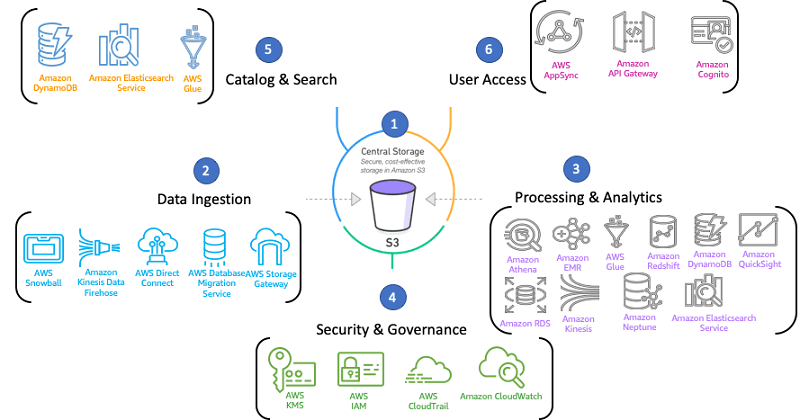
Detail Aws vs Azure product comparison
| Description | AWS Service | Azure Service |
|---|---|---|
| Virtual servers allow users to deploy, manage, and maintain OS and server software. | Elastic Compute Cloud (EC2) | Virtual Machines |
| Managed hosting platform | Elastic Beanstalk | |
| App Service | A cloud service to train, deploy, automate, and manage machine learning models. | Sage Maker Machine Learning |
| Cloud-based Enterprise Data Warehouse (EDW) that uses Massively Parallel Processing (MPP) to quickly run complex queries across petabytes of data. | Redshift | Synapse Analytics |
| Fully managed, low latency, distributed big data analytics platform to run complex queries across petabytes of data. | EMR | Azure Data Explorer |
| Apache Spark-based analytics platform | EMR | Data Bricks |
| Managed Hadoop service. Deploy and manage Hadoop clusters in Azure | EMR | HDInsight |
| Create, schedule, orchestrate, and manage data pipelines. | Data Pipeline Glue | Data Factory |
| System of registration and system of discovery for enterprise data sources | Glue | Data |
| Business intelligence tools that build visualizations, perform ad hoc analysis and develop business insights from data. | QuickSight | PowerBI |
| Integrate systems and run backed processes in response to events or schedules without provisioning or managing servers. | Lambda | Functions |
| Managed relational database service | RDS | SQL Database |
| Services that allow the mass ingestion of small data inputs, typically from devices and sensors, to process and route the data. | Kine-sis Streams | Event Hubs |
| Object storage service | Simple Storage Services (S3) | Blob Storage |
Both Microsoft Azure and Amazon Web Services (AWS) offer a plethora of tools and services, including Azure analytics services and AWS data analytics, that are incredibly valuable for handling complex workflows and supporting modern data analytics use cases.
However, enterprises need to set up the right strategy to make the best use of resources that maximize efficiency and reduce the costs associated with cloud computing. A multi-cloud and hybrid model is gaining popularity today due to the numerous benefits they offer, but there is no one size fits all approach that would work.
At Polestar Analytics, we are a leading data analytics service provider and we have delivered several cloud computing projects using best-of-breed technology, to large enterprises globally.
About Author

Insights Explorer
If data is oil, then analytics is the combustion engine of this current era.